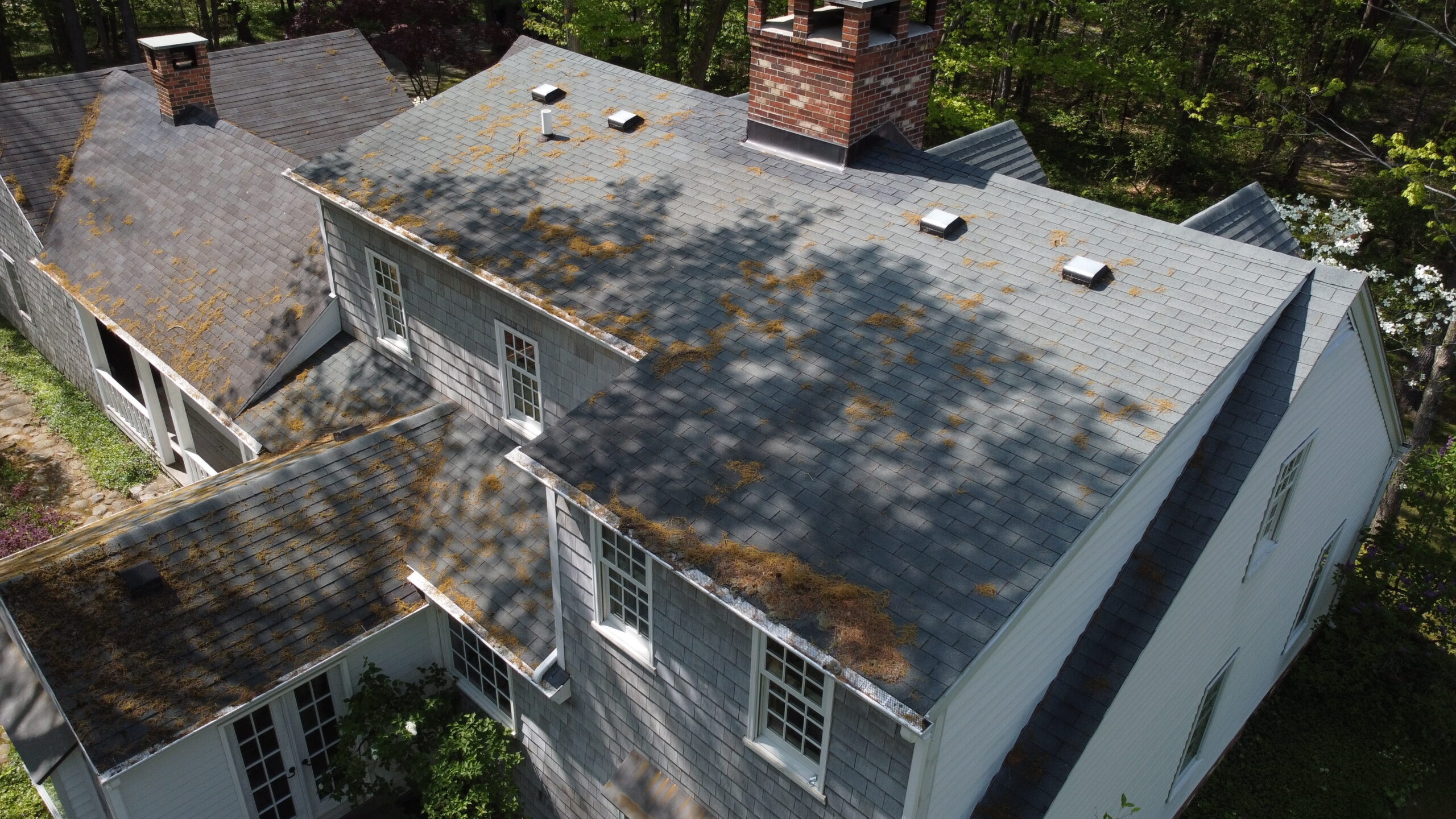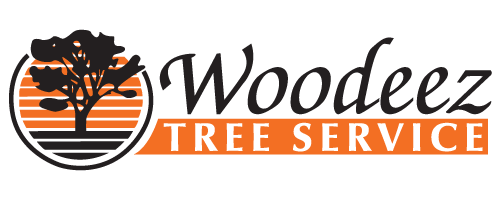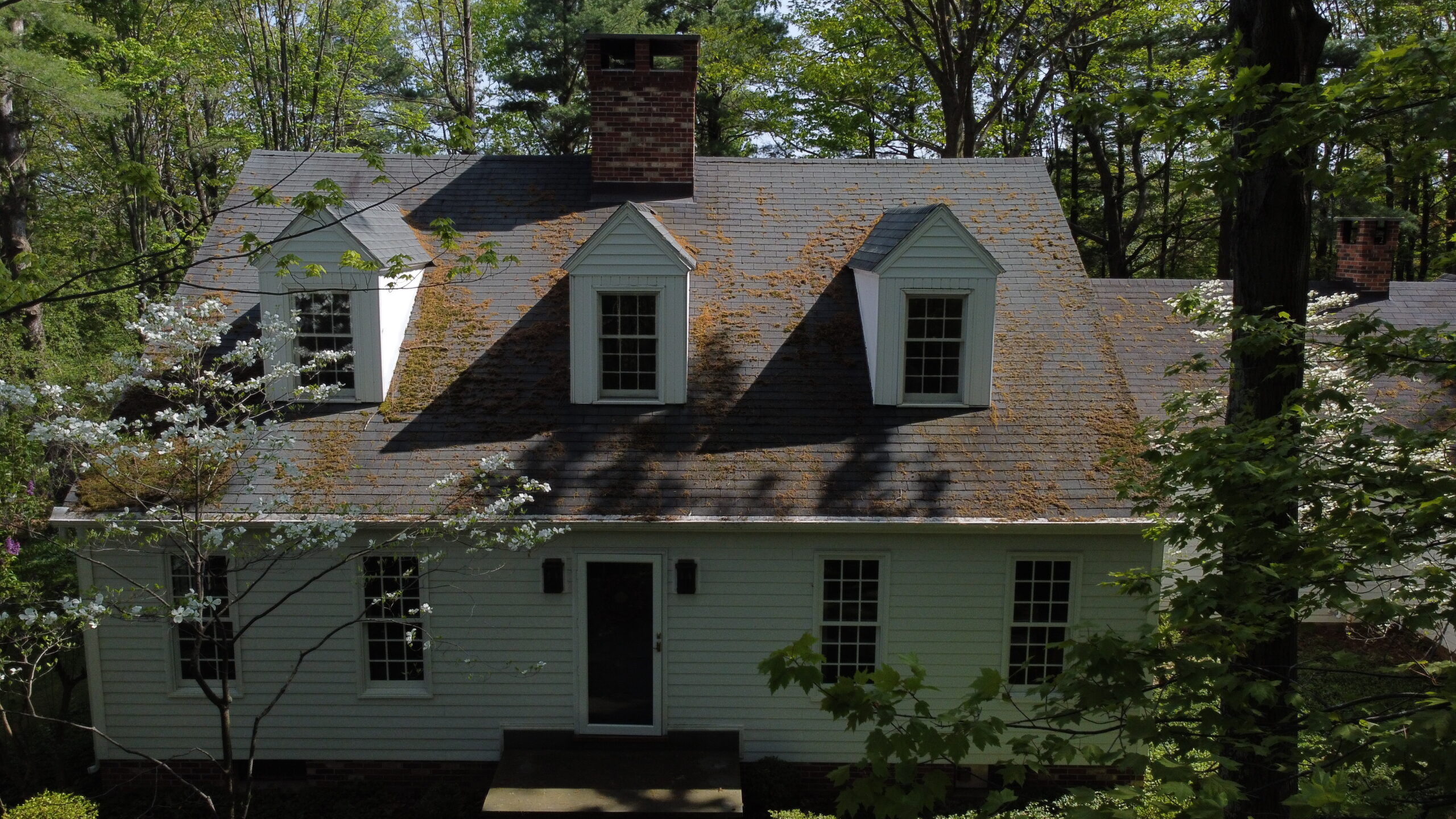Moss on your roof may seem like a minor cosmetic issue, but it’s often a sign of something bigger, especially if you have trees growing close to your home.
Overhanging limbs may provide shade and curb appeal, but they can also trap moisture, drop debris, and speed up roof deterioration. Left unchecked, that leafy canopy can lead to major home repairs down the line.
In this blog, we’re breaking down the effects of overhanging branches on your home’s roof and why tree maintenance is crucial for your home’s health.
How Overhanging Branches Encourage Moss Growth
If you’ve ever wondered, “Why is there moss growing on my roof?”, the answer might be hanging just above it.
When tree limbs stretch too far over your house, they block sunlight, prevent your roof from fully drying out after rain, and drop leaves and twigs that trap moisture. This damp, shaded environment is the perfect breeding ground for moss on roof shingles, especially during humid summer months.
Once moss takes hold, it begins to grow underneath and around shingles, lifting them and allowing water to seep in. Over time, that leads to roof erosion, mold, and even internal leaks.

The Effect of Shade and Debris on a Roof
You may not realize the impact shade can have on roof moisture retention, but it’s a vital factor in maintaining a healthy and durable roofing system. Constant dampness, especially in shaded areas, creates conditions that allow moisture to persist.
This ongoing wetness, combined with organic debris such as leaves and twigs that often accumulate in these dark spots, gradually wears down the shingle granules. Over time, this unnoticed deterioration accelerates until it becomes a significant issue.
Additionally, you might notice algae growth appearing as black or green streaks across your roof’s surface—clear signs that certain areas aren’t drying properly after rain or dew. What starts as a small patch of moss can quickly become an issue if left unattended, potentially leading to severe problems such as leaks or structural damage.
Tree Trimming Tips to Prevent Moss Growth
Proper trimming not only safeguards your home from potential damage but also encourages healthy growth for your trees.
Trim Limbs Within 6–10 Feet of Your Roofline
These branches can create a direct pathway for pests and moisture, which may lead to mold or rot on your roof. Keeping these limbs at a safe distance acts as a protective buffer against falling debris during storms or high winds.
Cut Back Branches That Hang Over Your Roof
Overhanging branches pose a significant risk; they can drop leaves, twigs, or even heavier limbs during inclement weather, potentially causing severe damage. Ensuring that no branches are directly above your roof is vital in preventing unwanted hazards.
Safety First
This is a dangerous project that requires professional tools. We recommend you have your trees trimmed by a professional tree service, like Woodeez!
If your roof has a lot of moss, algae, or deterioration, schedule a roof inspection with a trustworthy exterior contractor.

FAQ
Q: Why is there moss growing on my roof?
A: Moss thrives in damp, shaded environments. Overhanging trees create ideal conditions by blocking sunlight and dropping debris that traps moisture.
Q: How to get rid of moss on the roof?
A: Consult a roofing or tree care professional. They will use gentle cleaning methods. To prevent its growth, contact a tree care company that can trim back trees, reduce shade, and keep debris off your roof.
Q: Can tree limbs damage my roof?
A: Yes. In addition to encouraging moss and algae, long limbs can rub against shingles, clog gutters, or even fall during storms.
Contact Woodeez Tree Service for Tree Trimming in Rochester, NY
To help trim trees back from your home’s roof, the Woodeez Tree Service team is just a phone call away. We offer tree assessments, care plans, and seasonal services tailored to Rochester’s unique climate.

